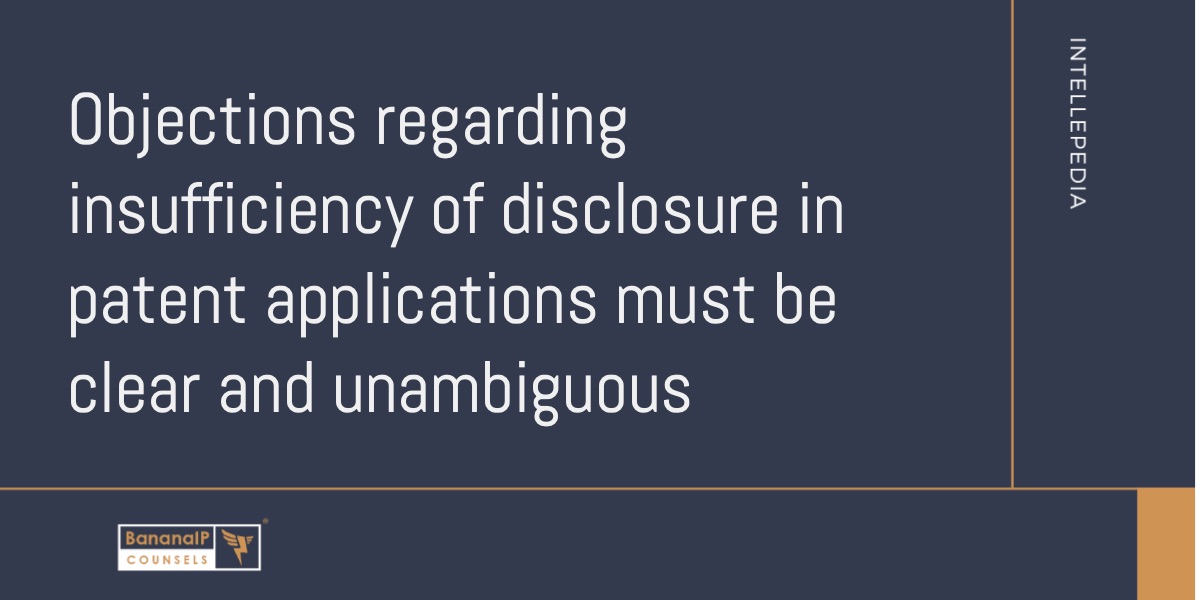The Delhi High Court in a recent case involving Microsoft Technologies and the Assistant Controller of Patents reiterated that the Patent office must articulate objections clearly and in an unambiguous manner. The court also emphasized the need to keep procedural irregularities under check, lest they undermine the fairness and integrity of the examination process.
Facts of the case:
Microsoft Technology Licensing LLC filed a patent application before the Indian patent office on 8th December 2011. The application bearing number 9642/DELNP/2011 and titled “Discovery of Secure Network Enclaves” was refused by the Assistant Controller on 30th November 2021 on the grounds that the invention failed to meet the inventive step requirements under section 2(1)(ja) and that claim 2 of the application was indefinite and violative of section 10(4) of the Patents Act, 1970.
Claims of the Application:
The Applicant submitted an amended set of six (6) claims in response to the objections raised in the hearing notice. Claims 1 and 2 of the claim set are as follows:
“We Claim:
- A method of operating a computer system to provide secure communications, the computer system comprising a plurality of host devices interconnected by a network and organized into enclaves, the method comprising:
at a host device (340), receiving a packet from a second host device (350) over the network;
in the host device (340), analyzing the packet, the analyzing comprising:
identifying a chain of one or more markers (330, 332, 334) in the packet, each marker indicating an enclave;
determining an enclave (110A, 110B, 110C) in which the host device (340) is located based on the chain of one or more markers, wherein each of the markers in the chain of one or more markers comprises a value assigned to an intermediary device (360, 362, 364) that processed the packet as it passed over the network, wherein the intermediary device is positioned in the network between the enclaves of the host device and the second host device;
determining a second enclave (428) in which a second host device (350) is located based on the chain of one or more markers; and
selecting a key (430) based on the enclave and the second enclave; and
generating a security association (434) between the host device (340) and the second host device (350) based on the selected key.
2. The method as claimed in claim 1, further comprising:
providing a plurality of pair-wise enclave keys (410); and
in the host device (340), selecting a pair-wise enclave key (430) of the plurality of pair-wise enclave keys based in part on the determined enclave.”
Court’s findings
The Court considered the submissions of the parties and observed as follows:
(i) Regarding section 10(4):
Compliance with the detailed requirements of Section 10(4) is indispensable for patent applications. However, if the patent office identifies certain deficiencies in an Application, it is also under the obligation to pinpoint at least the specific sub-section(s) of the provision in question in the FER and/ or the Hearing Notice. The objections concerning sufficiency of the invention’s disclosure within a patent application must be articulated with clarity, avoiding any ambiguity regarding the application’s compliance with Section 10(4) requirements. This is crucial to ensure that the Applicant is provided a fair chance to address the deficiencies, or to present arguments countering the objections raised. The conclusion that a specified claim of a particular invention fails to meet the standards set forth in Section 10(4) of the Act, without a detailed exposition of the non-compliance specifics, is not legally tenable. The Assistant Controller should have at the very least, provided a succinct, if not comprehensive explanation, detailing the manner in which the subject invention contravened the requirement under Section 10(4). By failing to adhere to this basic requirement, the Assistant controller erred in refusing the application under section 10(4).
(ii) Regarding inventive step requirements u/s 2(1)(ja)
The Court observed that there was firstly a procedural infirmity concerning the prior art documents D2 and D3. Although D2 was referenced in the FER, it was conspicuously absent from the Hearing Notice. This omission effectively deprived the Appellant of the opportunity to address or counter the assertions arising from D2 during the hearing or in subsequent written submissions. D3 was neither mentioned in the FER, nor the Hearing Notice, and was raised for the first time only in the refusal order. Such procedural irregularities undermine the fairness and integrity of the examination process, and are violative of principles of natural justice.
Conclusion:
In view of the aforementioned observations, the Court set aside the refusal order and remanded the matter to the patent office for de novo consideration. The Court also directed the Patent office to issue a notice of hearing, delineating the objections, if any, so that the Applicant could have sufficient opportunity to take necessary actions.
The above decision yet again underscores the need for IPO orders to be well-reasoned and in keeping with the well-established principles of natural justice.
Citation: C.A.(COMM.IPD-PAT) 26/2022 https://indiankanoon.org/doc/104502541/
Drafted by Mr. Gaurav Mishra, Patent Team, BananaIP Counsels.
Disclaimer
The case note/s in this blog post have been written by IP Attorneys at BananaIP Counsels based on their review and understanding of the Judgments. It may be noted that other IP attorneys and experts in the field may have different opinions about the cases or arrive at different conclusions therefrom. It is advisable to read the Judgments before making any decisions based on the case notes.
If you have any questions, or if you wish to speak with an IP expert/attorney, please reach us at: [email protected] or 91-80-26860414/24/34.



